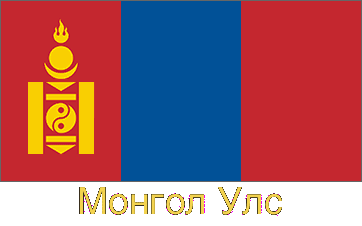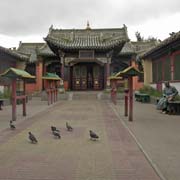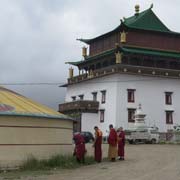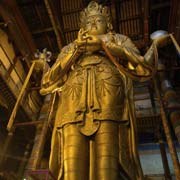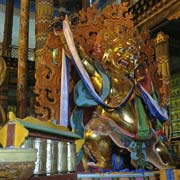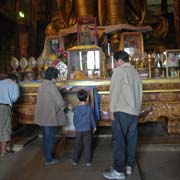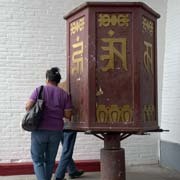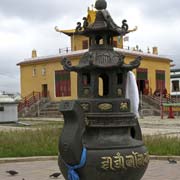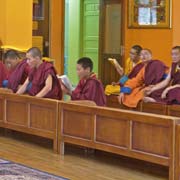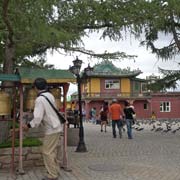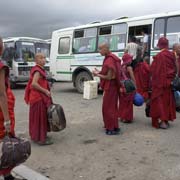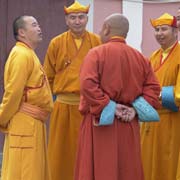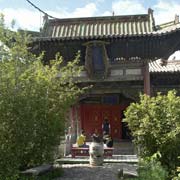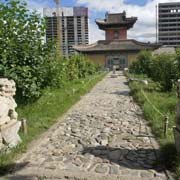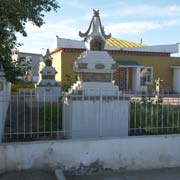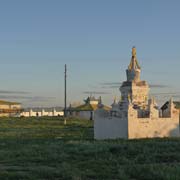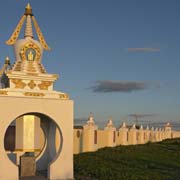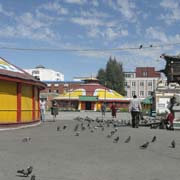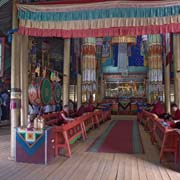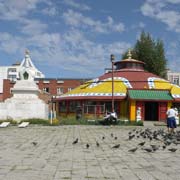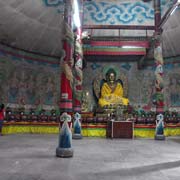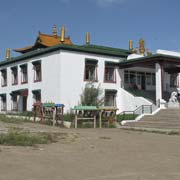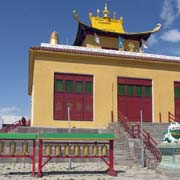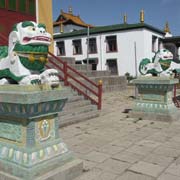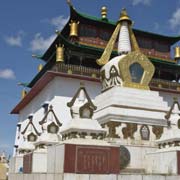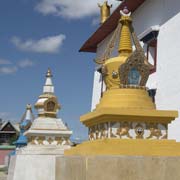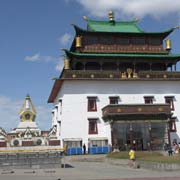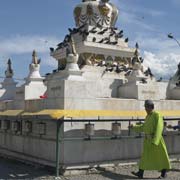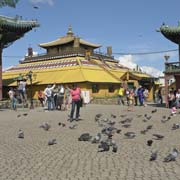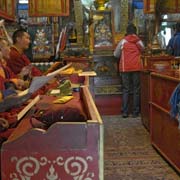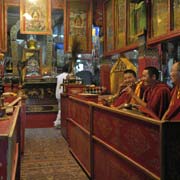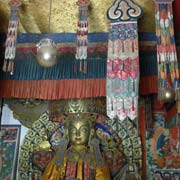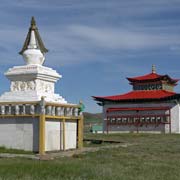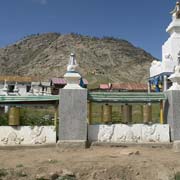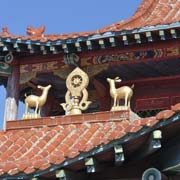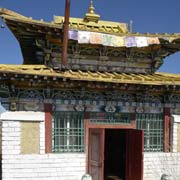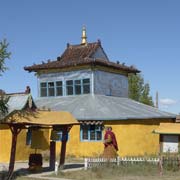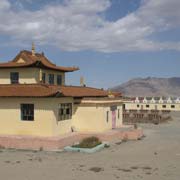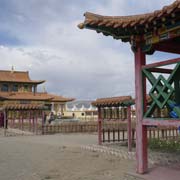Photos of Buddhist Monasteries, Mongolia
Buddhist Monasteries
Mahayana (Tibetan) Buddhism is the dominant religion in Mongolia, although shamanist beliefs still exist and may be practised side by side.
you may then send it as a postcard if you wish.
In the 13th Century, Kublai Khan, in his court in Khanbalig (Beijing), came into contact and was influenced by Buddhism when he met Drogön Chögyal Phagpa, leader of the Sakya school of Tibetan Buddhism who became his guru and spiritual advisor. In 1578 Altan Khan met a Tibetan spiritual leader called Sonam Gyatso. He converted to Buddhism and gave Sonam Gyatso the title “Dalai Lama” (“Dalai” meaning “ocean” in Mongolian and “Lama” meaning “teacher” in Tibetan): this was the spark that reintroduced Tibetan Buddhism to Mongolia and mass conversions followed. Men and boys were conscripted to monastery life, and as a result, there was far less fighting and armed conflict with China, which encouraged this by funding more monasteries.
Over the centuries, monasteries increased their wealth and power, and in the early twentieth century, Outer Mongolia had 583 monasteries and temple complexes, controlling an estimated 20% of the country’s wealth. Almost all Mongolian cities grew up on the sites of monasteries. Ulaanbaatar, for example, had two monasteries with around 13,000 and 7,000 monks. After the People’s Republic was formed, the revolutionaries were determined to modernise the country and felt the Buddhist church was in the way. In 1934 there were well over 800 major Buddhist centres and 3,000 temples, an annual income that almost matched the state’s, while more than 13% of Mongolia’s population was a monk. Following Stalin’s example of prosecuting the Orthodox church, Khorloogiin Choibalsan initiated a campaign of terror and destruction in the late 1930s. Almost all monasteries and temples were destroyed; up to 30,000 monks were massacred, with thousands more sent to Siberian labour camps.
Some buildings were retained as museums, like the three temples in Erdene Zuu monastery near the old Mongol capital of Karakorum, Zayain Gegenii Süm, now the Arkhangai Provincial Museum in Tsetserleg and the Choijin Lama Temple museum in the heart of Ulaanbaatar. Only one monastery remained open with a community of 100 monks: the Gandantegchinlen (Gandan) Monastery, established in 1835 by the Fifth Jebtsundamba, who was Mongolia’s highest reincarnated lama. It became the principal centre of Buddhist learning in Mongolia. It became a display monastery for foreign visitors: when the American Vice President, Henry Wallace, visited Mongolia in 1944 and asked to see a monastery, he was taken here. Gandan remained a “show monastery” for other foreign visitors until 1990 when it was restored to full functionality and today has more than 600 monks. All over Mongolia, monasteries and temples have been restored and rebuilt. Two generations have been raised without being exposed to Buddhist rituals. But there is a revival, and some young boys are again trained as monks.


